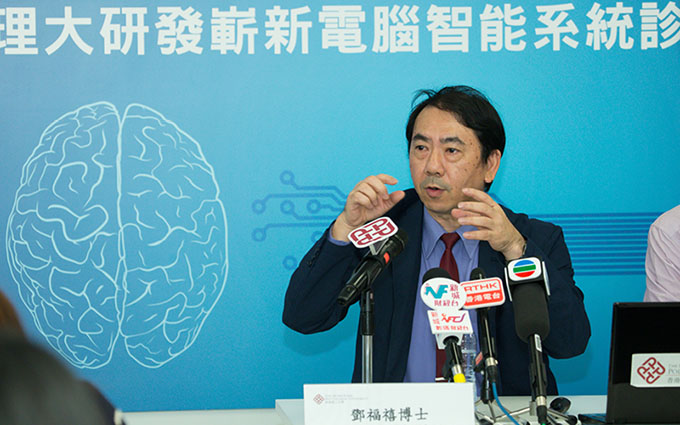It is difficult for medical professionals to analyse many computer images and identify subtle abnormal changes for stroke diagnosis in short period of time. In this issue, Dr Tang Fuk-hay at the Department of Health Technology and Informatics has introduced a novel computer-aided stroke detection system for speedy and accurate diagnosis.
Why do you initiate this project?
Millions of brain cells can be destroyed every minute following a stroke. Timely diagnosis and intervention within the golden hours of stroke are thus vital to minimising damage and even saving lives. However, stroke specialists cannot work around the clock perusing computerised tomography images, which increases the risk of misdiagnosis and delayed diagnosis of acute stroke. To alleviate this situation, we developed a novel Computer-Aided Detection (CAD) System for acute stroke.
Please briefly introduce this stroke identification system.
Using sophisticated calculations and artificial intelligence, the system can detect whether patients were struck by ischemic or haemorrhagic stroke by analysing 80-100 computer images and identifying those with abnormal changes (e.g. loss of insular ribbon or sulcus and dense middle cerebral artery signs) in just three minutes with 90% accuracy.How are the two major parts functioning in the system?
The first part of the system is an algorithm for automatic extraction of areas of suspected region of interest according to the computed tomography (CT) scan images of the brain. When blood flow to the brain is blocked, a specific area turns softer or decreases in density due to insufficient blood flow; thus pointing to an ischemic stroke.
The second part is an artificial neural network to classify region of interest for stroke through learning the defining stroke features and performing automated reasoning. By analysing the CT scans, this part of the system detects where the images look "abnormal" and highlights them for doctor's further review.
What are the expected outcomes with this system?
Experienced specialists and even non-specialist physicians can now easily detect subtle, minute changes in the brain and lower the chance of missed diagnoses. With this ground-breaking computer technology, frontline medical professionals are able to achieve speedy and accurate diagnosis and increase the chances of recovery, thus raising hope for stroke patients.
